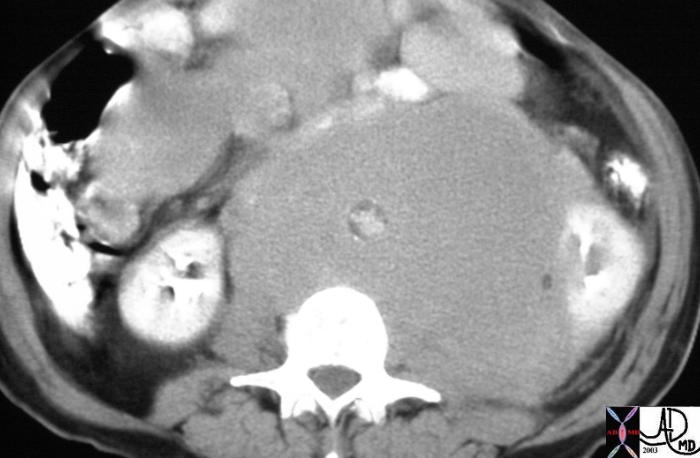Lymphoma of the Aorta
Copyright 2008
Definition
Lymphoma of the aorta is most commonly due to lymphamatous involvement of lymph nodes around the aorta. It is rare that the aortic wall is invaded by the disease.
The cause of most lymphomas is not known but it is most probably a manifestation of mutations in certain genes called the oncogenes which fail to inhibit uncontrolled growth. Specific causes that have been linked to the disease include Epstein Barr virus, immune ddeficiency syndromes, autoimmune diseases, and exposure to chemicals such as pesticides herbicides and water contaminated wit nitrates.
Progressive enlargement of lymph nodes is a characteristic result.
The diagnosis is suspected clinically with complaints of night sweats or unexplained fevers, and th enlarged glands or enlarged spleen may be felt on examination. The studies of choice include CT and or PET CT. Biopsy and flow cytometry conform the diagnosis as well as characterize the subtypes of the disease.
Treatment plans are based on the type and extent of the disease, and mnay involve either chemotherapy and or radiation therapy.

Atherosclerotic Aorta Totally Surrounded by Lymphomatous Disease |
| This cross sectional image of the mid abdmen shows an aorta with an expanded diameter, which in this case is associated with an extremely small lumen. Note the wall of atherosclerotic calcification is on the inside of the soft tissue surrounding it. The case represents non-Hodgkins abdominal lymphoma that masquerades as an abdominal aortic aneurysm. The positioning of the calcification is key to this recognition. Courtesy Ashley Davidoff MD 15657 code CVS aorta large lyphoma radiologists and detectives |
